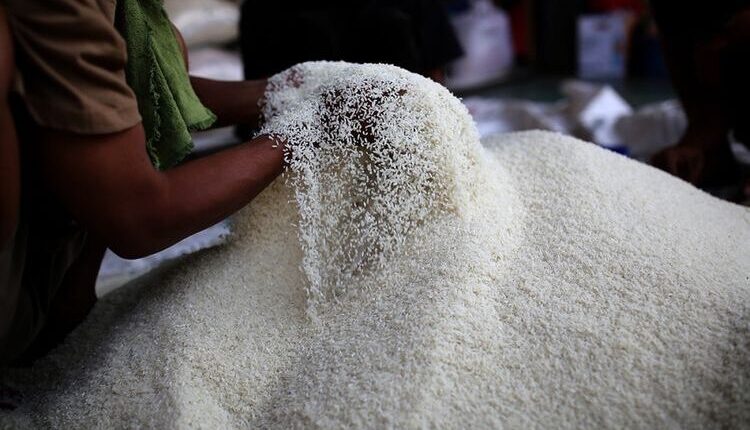The Government Successfully Stabilized Rice Prices Amid High Inflation
By: Andika Simangunson )*
The impact of the success of controlling inflation by the government is starting to show. Although in general, the Indonesian economy is still experiencing inflation. The rice commodity is the highest contributor to national food inflation. Based on data from the Ministry of Trade’s Market and Basic Needs Monitoring System (SP2KP), rice prices have crept up since the beginning of the third quarter of 2022, for both premium and medium quality rice.
The increase in rice commodity inflation was triggered by three main reasons. First, fertilizer prices are increasing. Second, there are restrictions on farmers using subsidized fertilizer. Third, there are business actors who push prices to rise. Some people dare to buy grain at high prices, then process it into premium rice. Despite this, the government is still trying to implement various solutions to control inflation.
Head of the National Food Agency, Arief Prasetyo Adi, said that this regulation regarding the distribution of government rice reserves is one of the instruments needed in the government’s efforts to control inflation. This is because rice is the main food commodity whose price fluctuations greatly influence the national inflation rate. The distribution of government rice reserves provides a legal umbrella for the distribution of government rice to certain community groups or what we call Beneficiary Families (KPM). This distribution was carried out through the Supply Availability and Price Stabilization (KPSH) activities held by the NFA by assigning Perum Bulog.
Arief explained that the criteria for KPM recipients of rice are poor families who have been recorded by the Ministry of Social Affairs. If there is a KPM that does not match the data, it can be replaced by the local village/district government through a predetermined mechanism.
Apart from that, Minister of Trade Zulkifli Hasan said that the government continues to carry out various efforts to stabilize rice prices. These efforts are taken through various programs such as government food assistance and cheap markets in collaboration with various parties. Zulkifli emphasized that the government is committed to ensuring the availability of rice for the community.
Zulkifli said this when visiting the Johar Market in Semarang, Central Java, saying that his party had traveled around Indonesia and was intensively coordinating with the National Food Agency and Bulog to ensure the rice problem was under control. Stabilization of rice prices in the regions is also synergized between the Central Government and Regional Governments. The government has a food assistance program of 10-kilograms of rice per family for 21.3 million beneficiary families which will be implemented from September to November 2023.
The government is also working with various parties to hold a cheap market. In monitoring the prices of basic necessities (bapok) at Johar Market, Zulkifli found that a number of commodity prices were classified as stable, meaning that the price of rice had not increased even though it had not fallen drastically.
Perum Bulog stated that it must balance two sides, both on the farmer and consumer side following the current increase in rice prices in a number of regions. Bulog ‘s Director of Human Capital , Purnomo Sinar Hadi, said that one of the efforts to balance the price of rice in the market is Stabilization of Food Supply and Prices (SPHP). Until now, subsidies for farmers are still in the form of fertilizer subsidies and Bulog is assigned to buy grain from farmers.
Another effort by the Government to maintain the stability of rice prices in Indonesia, which is currently undergoing adjustments due to the impact of the long dry season, is to intensify the Cheap Market Movement (GPM). The massive Cheap Market Movement (GPM) throughout Indonesia is a form of the Government’s real commitment to realizing rice price stability. The government guarantees that the price of rice is affordable for the public and that stock is always available on the market. Even though domestic rice production is declining due to the El Niño climate phenomenon, the Government has taken various concrete steps to ensure that Government Rice Reserves (CBP) are available for the next few months.
People don’t need to worry about responding to rice price fluctuations that occur. This is a normal thing in economic mechanisms. Considering rice as a basic commodity, the Government has intervened in the market through the Cheap Market Movement (GPM) program to achieve stability in the price of rice on the market. Apart from that, the Government is also accelerating the Stabilization of Food Supply and Prices (SPHP) by distributing rice social assistance to people in need.
President Joko Widodo previously also instructed relevant Ministries/Institutions together with Regional Governments to speed up rice assistance to Beneficiary Families. Rice assistance can help relieve pressure on rice prices which have an impact on the consumer price index, increase food reserves to maintain stock stability, reduce rice prices in the market and help control inflation in the regions until it declines gradually.
The series of efforts made by the Government to stabilize rice prices is worthy of appreciation because it has been proven to stabilize inflation and reduce fluctuations in rice prices on the market. Apart from that, the Government has also launched various superior programs to achieve long-term national food security. This is clear evidence of the strong commitment of President Joko Widodo’s government in creating a superior and highly competitive generation of Indonesians.
)* The author is an Agriculture Student at UNS (Sebelas Maret University) Surakarta
